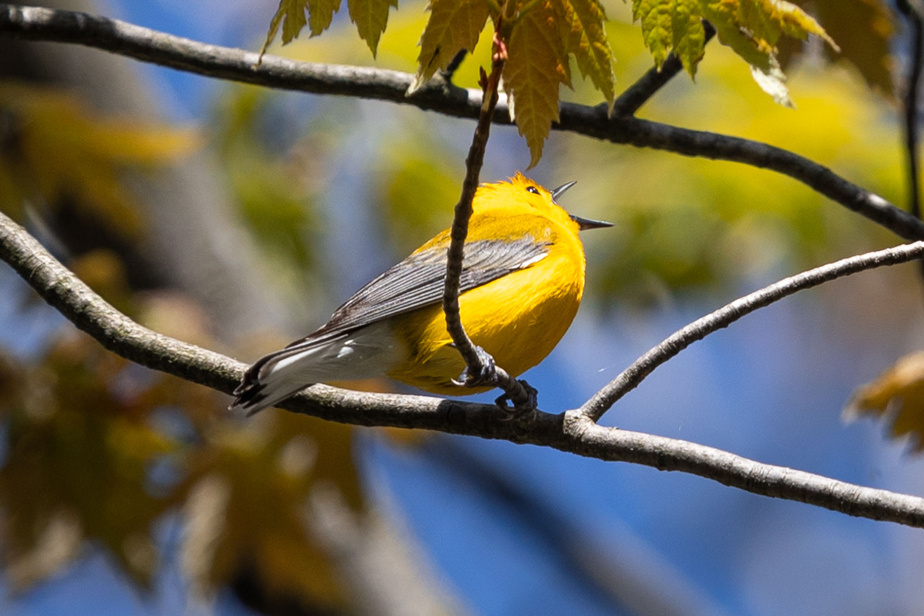But why this change? Why do we have to get used to new names? It is often a question of taxonomy, the science that deals with the designation, description and classification of organisms, explains Jean-Sébastien Guénette, general director of QuébecOiseaux.
“In some cases, there are genetic analyses that discover that a family is not necessarily classified in the right place, which generates the need to find new names,” he explains.
This is how ornithologists realized that the warblers here had nothing to do with the warblers of Europe. The same goes for the finches.
“The warblers are now parulines and the finches are buntings,” says Mr. Guénette.
There is also a movement emerging in the United States, the need to change the names of birds that include the name of a person who is no longer really recommendable.
This is how McCown’s longspur is now called the black-bellied longspur. John Porter McCown was a Confederate general.
The American Ornithological Society (AOS) has launched a pilot project to replace all bird names that may be offensive, or that include a person’s name.
Ornithologists, however, have opposed replacing all of these latter names and would prefer a case-by-case approach.
“The AOS prefers a wall-to-wall approach because they didn’t want to start determining who is meaner and who is less mean,” Guénette said.
In America, there is no structured official entity that deals with bird names in French.
“These are two experts, Michel Gosselin and Normand David, who have always dealt with these names, they are world leaders,” says Jean-Sébastien Guénette. “But Normand died a year ago, which put a bit of pressure on us to put in place a more sustainable process to manage this file.”
QuébecOiseaux has just announced the formation of a committee to revise French bird names and has launched a call for people wishing to take part.
At first glance, there aren’t many French bird names that would be deemed offensive.
“In Quebec, there is the Eskimo curlew, but it has practically disappeared since 1963, so we never hear about it,” says Mr. Guénette.

PHOTO EDOUARD PLANTE-FRÉCHETTE, LA PRESSE ARCHIVES
A group of common mergansers. Long ago, the name sawbill was used instead.
Bird names that include a person’s name are also not very numerous in Quebec: we are talking about Bicknell’s thrush, Cooper’s hawk and Wilson’s snipe. We find more such names in regions such as South America, Africa and Oceania.
And there continue to be changes to be made following genetic analyses. In Quebec, we are talking about only a few birds per year.
Last year, the northern goshawk, a type of sparrowhawk, was given a new name: the American goshawk.
“The goshawks that we observed in Europe and America have been divided into two different species,” says Mr. Guénette.
QuébecOiseaux favors descriptive names, linked to the morphology of the bird, its song, its habitat or its geographic distribution, but it is not always easy to come up with a new name.
“When we get into buntings, for example, we start going around with adjectives like striped, spotted, or with a description of their geographic range or habitat.”

PHOTO MARTIN CHAMBERLAND, LA PRESSE ARCHIVES
The very beautiful wood duck, which European ornithologists persist in calling the Carolinian duck.
This work may result in name changes for birds outside Quebec, particularly in regions where there are few French-speaking ornithologists, such as Asia or Oceania.
In the past, there have been efforts between ornithologists from America and Europe to harmonize French bird names, notably during a major initiative in 1992. With relative success. Unlike the Quebecers, European ornithologists did not really recognize the standardized list.
“Before 1992, we talked about the common loon in Quebec and the northern loon in Europe,” says Jean-Sébastien Guénette. “The compromise that was made was to adopt the name common loon. That’s what we did in Quebec, but in Europe, they never recognized this name and always talk about the northern loon.
Mr. Guénette says that European ornithologists insist on calling the very beautiful bird that is called a wood duck in Quebec a Carolinian duck.
“This duck is not even found in Europe,” he says ironically.
Video suggestion
Rock skiing
French skiers can’t wait for winter in this funny video.
Watch the full video
The number of the week
13
This is the number of wildlife reserves managed by SEPAQ in Quebec.
